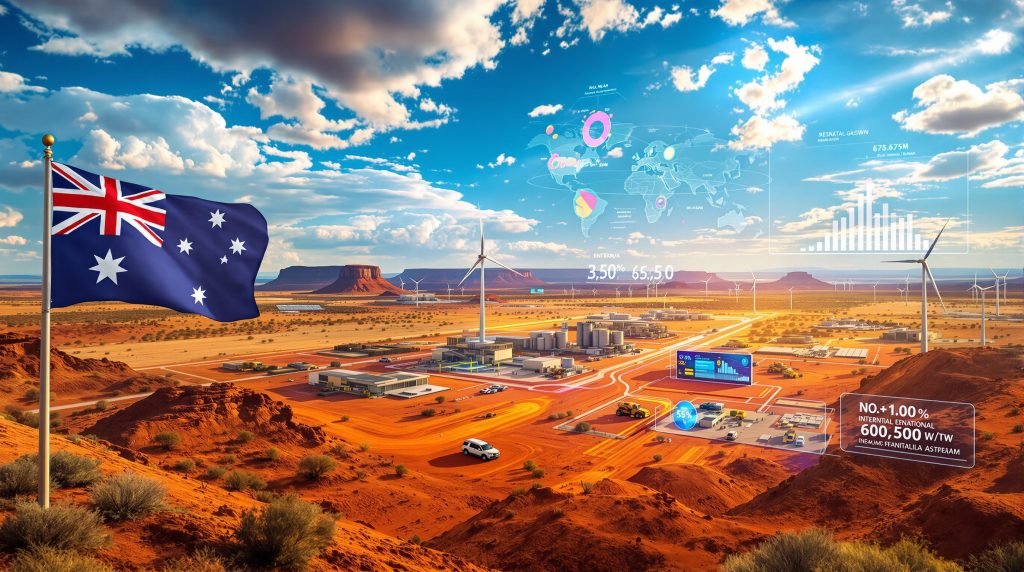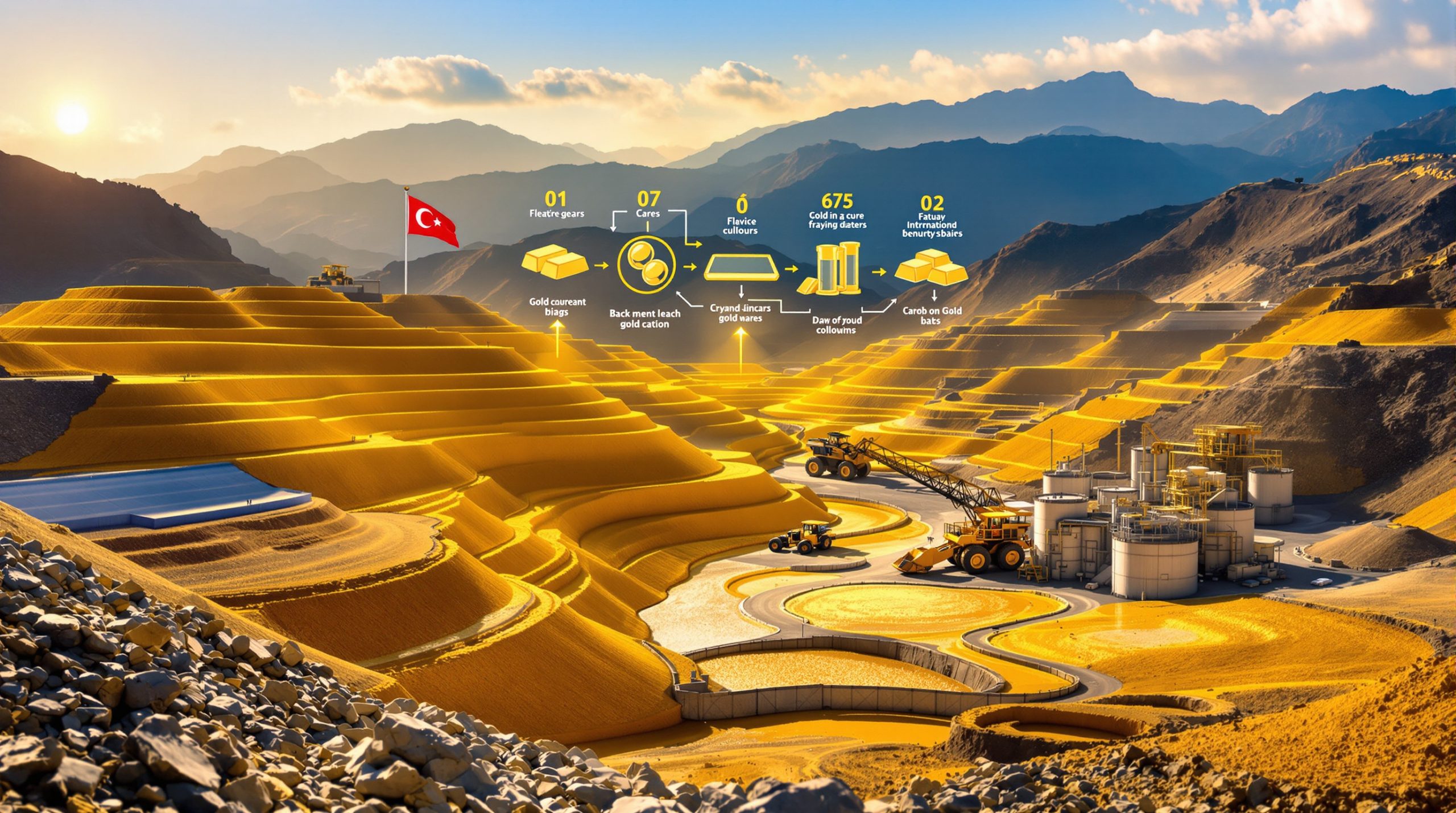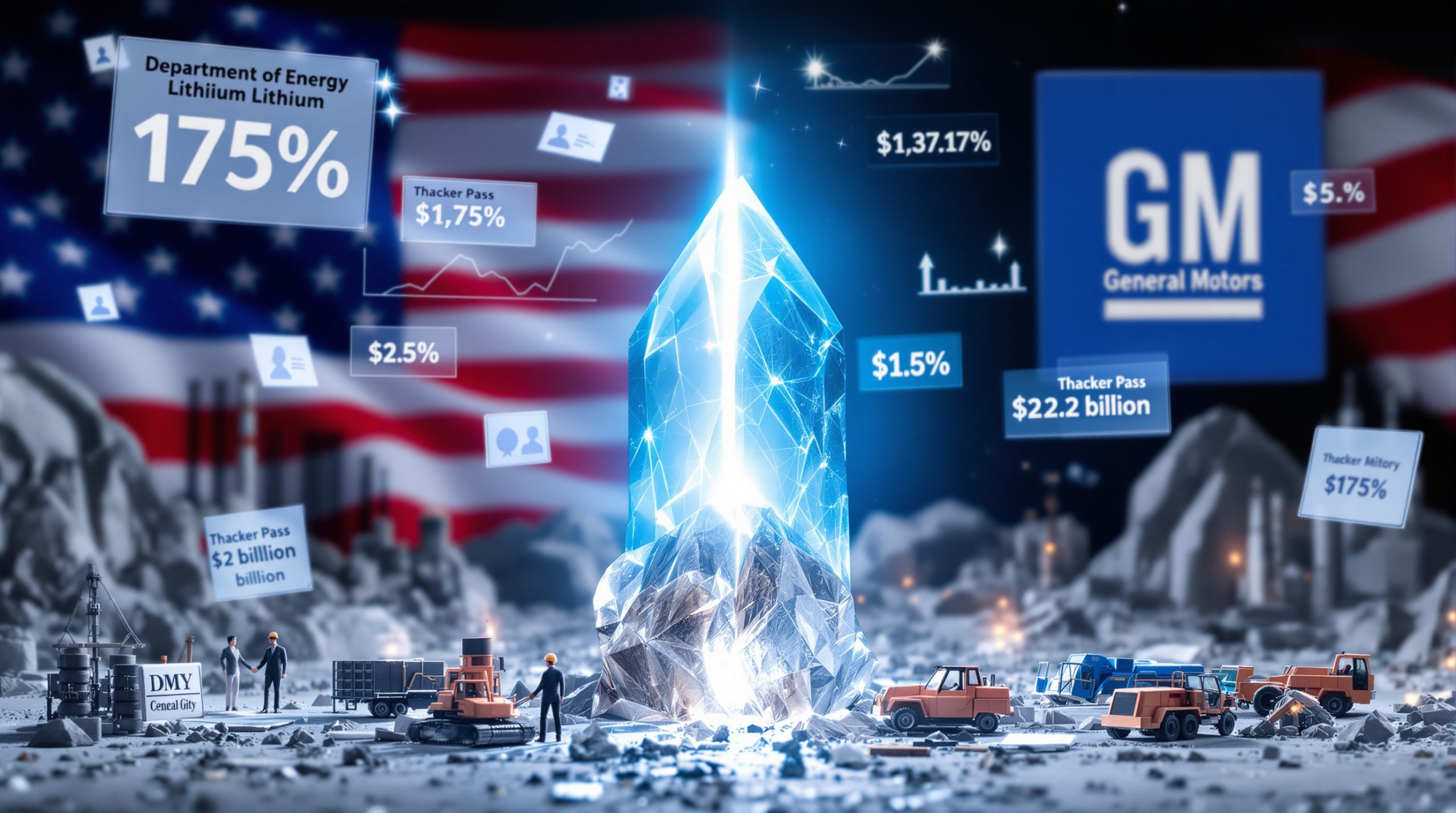Australia's Pathway to Critical Minerals Superpower Status: Opportunities and Challenges
Australia stands at a pivotal moment in its resource development history, poised to leverage its vast mineral wealth into a strategic position in global supply chains. With growing international demand for materials essential to renewable energy technologies, defense systems, and advanced electronics, the nation's critical minerals sector represents a significant economic opportunity. This comprehensive analysis explores how can Australia become a critical minerals superpower through strategic development and international partnerships.
What Are Critical Minerals and Why Do They Matter?
Critical minerals are resources essential for modern technologies that face supply chain vulnerabilities or concentration risks. They form the foundation of the critical minerals energy transition, advanced manufacturing, and national security infrastructure.
Definition and Strategic Importance
Critical minerals include rare earth elements, lithium, cobalt, graphite, and numerous other materials that serve as irreplaceable components in technologies ranging from electric vehicle batteries to wind turbines and defense systems. Their strategic importance stems from limited global production sources and growing geopolitical tensions around supply security.
These minerals are characterized by their:
- Essential role in renewable energy technologies (solar panels, wind turbines, energy storage)
- Critical function in defense applications (guidance systems, radar, communications)
- Necessity in consumer electronics and advanced computing
- Limited substitutability in manufacturing processes
According to the International Energy Agency (IEA), the energy sector's mineral requirements could increase by as much as 600% by 2040 in scenarios aligned with climate goals. This represents an unprecedented shift in material demand across global supply chains.
Global Demand Projections
The transition to net-zero emissions is driving exponential growth in critical mineral demand. Electric vehicles require six times the mineral inputs of conventional vehicles, while an offshore wind plant requires nine times more mineral resources than a gas-fired power plant of equivalent capacity.
Key industries driving demand increases include:
- Electric vehicle manufacturing
- Renewable energy generation
- Energy storage systems
- Advanced electronics and computing
- Defense and aerospace applications
- Telecommunications infrastructure
This surge in demand creates both opportunities and challenges for resource-rich nations like Australia, particularly as the world seeks to diversify supply chains away from current concentrations.
What Critical Mineral Resources Does Australia Possess?
Australia's geological advantages position it uniquely among developed nations. As former Prime Minister Kevin Rudd noted at a Centre for Strategic and International Studies forum, "Most of the periodic table is under our soil" (Australian Mining, August 21, 2025).
Australia's Geological Advantages
The Australian continent contains world-class deposits of numerous critical minerals, formed through diverse geological processes over billions of years. The country's stable cratonic regions, extensive sedimentary basins, and volcanic provinces have created ideal conditions for mineral formation and preservation.
These geological features have resulted in:
- Diverse mineral deposits across multiple regions
- World-class concentrations of specific elements
- Relatively accessible mining conditions
- Potential for significant new discoveries
Geoscience Australia's assessments indicate that many regions remain underexplored using modern techniques, suggesting substantial untapped potential beyond currently identified resources.
Key Critical Minerals in Australia
Australia possesses globally significant resources of numerous critical minerals essential to the energy transition and advanced manufacturing:
- Rare Earth Elements: Major deposits in Western Australia, Northern Territory and South Australia
- Lithium: World-leading reserves with multiple active mines in Western Australia
- Cobalt: Significant resources associated with nickel deposits
- Nickel: Major deposits in Western Australia
- Manganese: Essential for batteries and steel production
- Vanadium: Emerging importance for grid-scale batteries
- Graphite: Growing significance for battery anodes
- Copper: Abundant resources critical for electrification
- Tungsten, Tantalum, and Titanium: Essential for specialized applications
The diversity of Australia's mineral endowment provides natural hedging against market fluctuations for any single commodity, strengthening the nation's position as a reliable supplier across multiple value chains.
How Does Australia's Mining Industry Compare Globally?
According to Rudd, Australia has "the biggest mining industry and the largest mining companies in the world" (Australian Mining, August 21, 2025). This established industry foundation provides crucial advantages for critical minerals development.
Current Industry Strengths
Australia's mining sector benefits from:
- Decades of operational expertise across diverse resource types
- World-class regulatory and safety frameworks
- Sophisticated capital markets with mining expertise
- Advanced exploration and extraction technologies
- Established export infrastructure and logistics networks
- Strong environmental management capabilities
The country's mining workforce is highly skilled, with capabilities transferable to critical minerals projects. Major companies like BHP and Rio Tinto bring global scale, capital access, and project management expertise that can accelerate development timelines.
Competitive Advantages
Australia offers several distinct advantages compared to other resource-rich nations:
- Political stability and transparent governance
- Strong rule of law and contract enforcement
- Established infrastructure networks
- Proximity to Asian manufacturing hubs
- Deep technical expertise in university research centers
- Supportive investment environment
- Commitment to environmental and social governance
As Rudd highlighted, Australia's "deep technical expertise represented in the research faculties of our major universities" provides a significant competitive edge (Australian Mining, August 21, 2025). This knowledge infrastructure supports innovation across the entire mineral value chain.
What Government Initiatives Support Critical Minerals Development?
Both federal and state governments have recognized the strategic importance of critical minerals through policy frameworks and investment programs.
National Strategy Overview
Australia has established a Critical Minerals Task Force to coordinate policy development and implementation across government agencies (Australian Mining, August 21, 2025). This task force works in conjunction with international partners, particularly the United States, which has "a whole-of-government effort – through the National Security Council, the Department of Defense, the Department of Energy, and others" focused on defence critical minerals strategy cooperation (Australian Mining, August 21, 2025).
Key elements of Australia's national approach include:
- Strategic resource assessments and mapping
- Regulatory streamlining for priority projects
- Research and development funding
- International partnership frameworks
- Investment attraction initiatives
- Skills and workforce development
The strategy aims to accelerate development timelines while maintaining environmental standards and community engagement.
State-Level Programs
Individual Australian states have implemented complementary programs targeting their specific mineral endowments:
- Western Australia: Focus on lithium, rare earths, and battery minerals
- Queensland: Emphasis on copper, cobalt, and vanadium
- South Australia: Programs supporting rare earths development
- Northern Territory: Critical minerals exploration incentives
- New South Wales: Critical minerals activation areas
These programs typically include geological surveys, exploration co-funding, infrastructure development, and regulatory coordination to accelerate project timelines.
What Processing Capabilities Is Australia Developing?
Moving beyond mining into processing represents a critical step in capturing more value from Australia's mineral resources.
Current Processing Landscape
Australia has historically exported many minerals as raw materials or concentrates, with limited domestic processing. However, this pattern is changing as:
- Companies recognize supply chain security benefits
- Government policy encourages domestic value-adding
- Technology advancements reduce processing costs
- ESG considerations favor shorter supply chains
Current processing facilities are predominantly focused on traditional minerals, with critical minerals processing in early development stages. Furthermore, the Australia lithium innovations are showing promising advancements that could strengthen the nation's position. Significant capital investment is required to establish comprehensive processing capabilities.
Case Study: Iluka Resources' Eneabba Project
The $1.2 billion Eneabba project represents a major milestone in Australia's critical minerals processing ambitions. According to Rudd, this facility has the potential to become "the country's first fully integrated rare earths processing facility" (Australian Mining, August 21, 2025).
The project includes:
- Mineral separation and concentration
- Rare earths extraction and refining
- Production of separated rare earth oxides
- Potential for metal and alloy production
When fully operational, Eneabba will establish an important domestic capability in a sector previously dominated by Chinese processing facilities.
Emerging Processing Initiatives
Beyond Eneabba, several other processing facilities are under development:
- Rare earths processing hubs in various states
- Lithium hydroxide production facilities
- Battery-grade materials refineries
- High-purity metal production facilities
- Recycling and urban mining operations
These initiatives often involve international technology partnerships, bringing expertise from countries with established processing capabilities while building Australian technical capacity.
How Is Australia Positioning Itself in Global Supply Chains?
Australia's critical minerals strategy extends beyond domestic development to international positioning as a trusted supplier in resilient supply chains.
Strategic Partnerships
International partnerships form a cornerstone of Australia's approach. As Rudd stated, Australia is "well-placed to assist in diversifying and creating resilient supply chains – helping the US … meet its requirements for a resilient America when it comes to critical minerals and rare earths" (Australian Mining, August 21, 2025).
Key partnerships include:
- US-Australia Critical Minerals Cooperation
- Collaboration with European Union countries
- Agreements with Japan and South Korea
- Emerging partnerships with India
- Private sector international ventures
These partnerships frequently involve high-level government engagement, as evidenced by meetings between BHP and Rio Tinto chief executives with US President Donald Trump (Australian Mining, August 21, 2025).
Supply Chain Resilience Initiatives
Australia's positioning emphasizes supply chain security and resilience through:
- Transparent and traceable production
- Adherence to high environmental standards
- Political and operational stability
- Reliable contract fulfillment
- Diversification of end markets
- Long-term supply agreements
These attributes are increasingly valued by manufacturers seeking to reduce supply chain vulnerabilities highlighted during recent global disruptions.
What Role Do Australian Mining Companies Play?
The development of Australia's critical minerals sector relies on companies ranging from global miners to specialized juniors.
Major Players and Their Projects
Australia's established mining companies are increasingly pivoting toward critical minerals:
- BHP and Rio Tinto: Leveraging their scale and expertise to develop critical mineral assets alongside traditional operations
- Mineral Resources: Expanding lithium production and processing
- Iluka Resources: Developing rare earths processing capabilities
- IGO Limited: Focusing on battery minerals
- Pilbara Minerals: Major lithium producer
Additionally, numerous mid-tier and junior companies are advancing specialized projects targeting specific critical minerals or regions. The ongoing mining industry evolution is reshaping how these companies approach critical minerals development.
Case Study: Lynas Rare Earths
Lynas represents Australia's most established critical minerals success story. The company operates rare earths processing operations in Malaysia and is expanding with a processing plant in Texas (Australian Mining, August 21, 2025).
Lynas has achieved:
- Position as the largest rare earths producer outside China
- Development of specialized processing expertise
- Strategic importance in global supply chains
- Partnerships with key technology manufacturers
- Support from multiple governments for expansion
The company's experience demonstrates both the challenges and opportunities in building critical minerals value chains beyond traditional mining.
What Economic Benefits Could Critical Minerals Bring?
The economic potential of Australia's critical minerals sector extends far beyond traditional mining revenues.
Projected Industry Growth
While specific forecasts vary, the critical minerals sector could represent tens of billions in additional export revenue by 2030. Growth projections indicate:
- Rapid expansion of existing operations
- Development of new mining projects
- Establishment of processing facilities
- Creation of thousands of direct jobs
- Significant indirect employment benefits
- Regional economic diversification
- Supply chain resilience premiums
These benefits would be distributed across multiple regions, providing economic development opportunities outside major cities.
Value-Adding Opportunities
Moving beyond mining into processing and manufacturing could multiply the economic value of Australia's critical mineral resources:
- Refined materials command premium prices
- Processing creates higher-skilled employment
- Technical expertise becomes exportable
- Research and development generates intellectual property
- Manufacturing attracts complementary industries
- Supply chain clusters create network effects
Rudd suggested that with proper policy settings, Australia could become "a great power – if not a superpower – in critical minerals and rare earths" (Australian Mining, August 21, 2025), highlighting the transformative potential of the sector.
What Challenges Must Australia Overcome?
Despite its advantages, Australia faces significant challenges in realizing its critical minerals ambitions.
Market and Pricing Obstacles
Rudd identified "pricing" as "the missing piece" that needs to be worked out with partners (Australian Mining, August 21, 2025). Critical minerals markets present unique challenges:
- Price volatility deters investment
- Market size is initially limited for some minerals
- China's dominance influences global pricing
- Capital requirements are substantial
- Development timelines are extended
- Return on investment uncertainties exist
These factors can complicate investment decisions, particularly for processing facilities that require significant upfront capital.
Infrastructure Needs
Developing Australia's critical minerals potential requires substantial infrastructure investment:
- Energy requirements for processing are intensive
- Water access can be constrained in many regions
- Transportation networks need enhancement
- Port facilities require specialization
- Digital infrastructure supports modern operations
- Skills development infrastructure is essential
Coordinating these investments across public and private sectors represents a significant planning challenge.
Skills and Workforce Development
The technical nature of critical minerals processing creates workforce challenges:
- Specialized metallurgical expertise is limited
- Competition for skilled workers is intense
- Training programs need development
- Regional workforce constraints exist
- International expertise may be required initially
- Research capabilities need enhancement
Building this workforce requires coordination between industry, education providers, and government training programs.
How Can Australia Achieve "Superpower" Status?
Transforming Australia's potential into "superpower" status requires coordinated action across multiple domains.
Required Policy Frameworks
Consistent, long-term policy frameworks are essential to attract the substantial investments required:
- Regulatory certainty for multi-decade investments
- Streamlined approval processes
- Strategic infrastructure coordination
- Research and development incentives
- Skills and education alignment
- International trade agreements
- Investment attraction frameworks
These policies must balance accelerated development with environmental protection and community benefits.
Industry Development Pathways
The critical minerals sector's development will likely follow evolutionary stages:
- Expansion of exploration and resource definition
- Development of new mining operations
- Establishment of basic processing capabilities
- Advanced material refining and separation
- Component and product manufacturing
- Recycling and circular economy integration
Success requires simultaneous progress across multiple stages rather than linear progression.
Measuring Success
Key performance indicators for Australia's critical minerals ambitions include:
- Production volumes across priority minerals
- Processing capacity development
- Value-added as percentage of production
- Employment creation and skills development
- Research outputs and technological innovation
- Supply chain integration with strategic partners
- Price premiums for responsibly sourced materials
Regular benchmarking against international competitors will help assess progress toward "superpower" status.
What Are Expert Perspectives on Australia's Potential?
Industry leaders and international observers offer varying perspectives on Australia's critical minerals ambitions.
Industry Leaders' Views
Mining industry executives generally express optimism about Australia's potential while acknowledging the challenges:
- Technical feasibility is widely accepted
- Capital availability requires appropriate returns
- Government policy consistency is essential
- International partnerships are crucial
- Timeline expectations vary significantly
- Environmental and social governance advantages are recognized
The high-level engagement of major company CEOs with international partners demonstrates serious commitment to the sector's development.
International Perspectives
Strategic partner nations increasingly view Australia as a key element in supply chain diversification:
- US policy explicitly supports Australian development
- European nations seek supply alternatives
- Asian manufacturing nations value stability
- Competitor nations are accelerating their own programs
- Financiers recognize strategic importance
This international attention provides both opportunities and competitive pressures as Australia develops its capabilities.
FAQ: Australia's Critical Minerals Future
What timeframe is realistic for Australia to become a critical minerals superpower?
Building a comprehensive critical minerals industry will require decades rather than years, with different elements progressing at varying speeds:
- Short-term (1-5 years): Expansion of mining operations, initial processing capabilities, policy framework development
- Medium-term (5-10 years): Established processing facilities, research capabilities, supply chain integration
- Long-term (10-20+ years): Advanced manufacturing, circular economy development, global leadership position
Accelerating factors could include technological breakthroughs, geopolitical developments, or rapid policy implementation.
How will environmental considerations impact development?
Environmental factors will significantly influence Australia's critical minerals development:
- Water use constraints in arid regions
- Energy transition requirements for processing
- Land use considerations and rehabilitation
- Community expectations for responsible operations
- Downstream customer ESG requirements
- Carbon border adjustments and emissions reporting
However, Australia's strong environmental regulatory framework and mine reclamation innovation provide advantages in addressing these challenges responsibly.
What role will Australian universities play in development?
Universities represent a crucial element of Australia's critical minerals strategy, as highlighted by Rudd's emphasis on "deep technical expertise represented in the research faculties of our major universities" (Australian Mining, August 21, 2025).
Key university contributions include:
- Metallurgical and processing research
- Workforce education and skills development
- International research partnerships
- Innovation and technology commercialization
- Environmental management advances
- Policy development and economic analysis
The integration of academic research with industry application will be essential for solving technical challenges throughout the value chain.
Australia's Critical Minerals Roadmap
Australia possesses extraordinary potential to become a critical minerals leader, but realizing this potential requires coordinated effort across government, industry, research institutions, and communities.
Key Success Factors
Several factors will determine whether can Australia become a critical minerals superpower:
- Policy consistency: Long-term frameworks that transcend political cycles
- Capital mobilization: Efficient allocation of public and private investment
- Technical innovation: Solutions to processing and manufacturing challenges
- Skills development: Building workforce capabilities across the value chain
- International partnerships: Strategic relationships with key markets and allies
- Environmental leadership: Setting new standards for responsible production
These factors are interdependent, requiring simultaneous progress rather than sequential development.
Strategic Positioning Opportunities
Australia's critical minerals strategy should emphasize distinctive advantages:
- Reliability premium: Stable, transparent operations in contrast to geopolitical uncertainties
- Environmental credentials: Responsibly produced materials for sustainability-conscious markets
- Technical excellence: High-quality products meeting exacting specifications
- Innovation leadership: Novel solutions to processing and manufacturing challenges
- Strategic alignment: Partnership with like-minded nations on supply chain security
By emphasizing these differentiators, Australia can establish a unique position in global markets beyond simple commodity production.
As global demand for critical minerals continues its exponential growth, Australia's combination of resource endowment, technical capability, and strategic partnerships positions it uniquely to become a genuine critical minerals superpower. The path forward requires sustained commitment, substantial investment, and innovative approaches, but the potential rewards include economic prosperity, strategic importance, and leadership in the clean energy transition.
Want to Profit from the Next Major Mining Discovery?
Discover how significant mineral discoveries can generate substantial returns by exploring Discovery Alert's dedicated discoveries page, where their proprietary Discovery IQ model transforms complex mineral data into actionable insights for ASX investors seeking a market-leading advantage.




